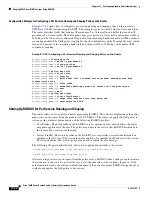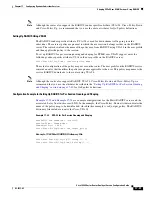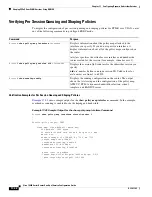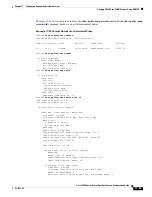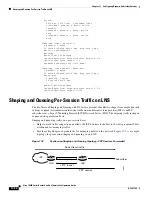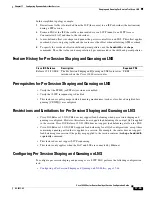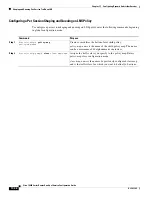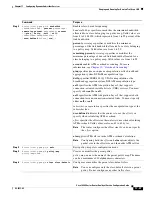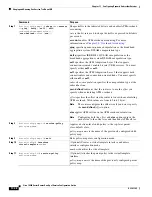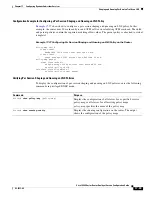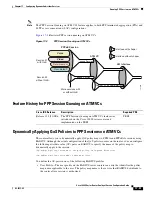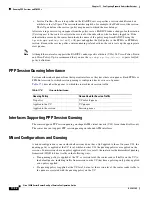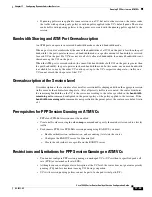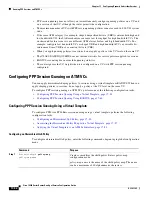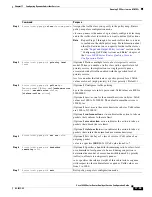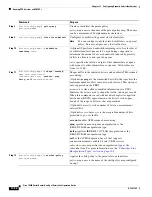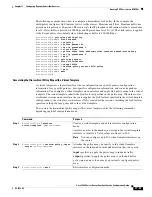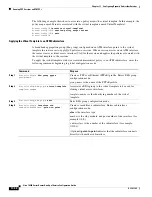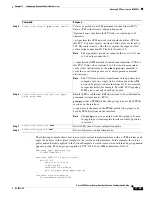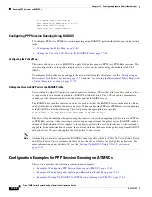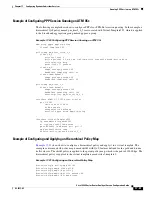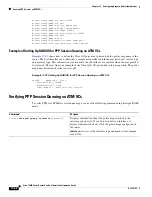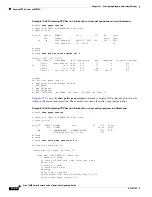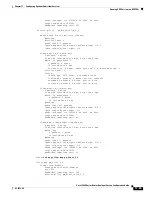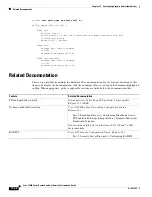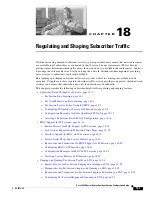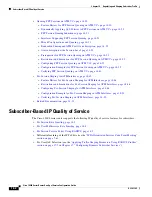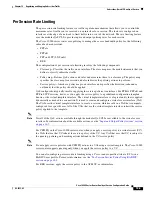
17-54
Cisco 10000 Series Router Quality of Service Configuration Guide
OL-7433-09
Chapter 17 Configuring Dynamic Subscriber Services
Queuing PPP Sessions on ATM VCs
•
PPP session queuing does not allow you to simultaneously configure queuing policies on a VC and
on a session of that VC, although the router permits the configuration.
•
The maximum number of VCs with PPP session queuing policies cannot exceed 16,000 VCs system
wide.
•
If the same ATM category (for example, shaped unspecified bit rate (UBR)) contains both high and
low bandwidth VCs, the SAR mechanism can cause low throughput for high bandwidth VCs. The
workaround for this issue is to use different ATM classes for low and high bandwidth VCs. For
example, configure low bandwidth VCs as shaped UBR and high bandwidth VCs as variable bit
rate-nonreal-time (VBR-nrt) or constant bit rate (CBR).
•
When you apply queuing policies to sessions, do not apply a policy at the VC level on the same VC.
•
The CLASS-BASED QOS MIB does not include statistics for service policies applied to sessions.
•
RADIUS accounting does not include queuing statistics.
•
The router ignores the VC weight when it is configured on a VC with PPP session queuing
configured.
Configuring PPP Session Queuing on ATM VCs
You can apply hierarchical shaping policies to sessions using a virtual template or RADIUS. When you
apply shaping policies to sessions, do not apply a policy at the VC level on the same VC.
To configure PPP session queuing on ATM VCs, perform one of the following configuration tasks:
•
Configuring PPP Session Queuing Using a Virtual Template, page 17-54
•
Configuring PPP Session Queuing Using RADIUS, page 17-60
Configuring PPP Session Queuing Using a Virtual Template
To configure PPPoA or PPPoEoA session queuing using a virtual template, perform the following
configuration tasks:
•
Configuring an Hierarchical QoS Policy, page 17-54
•
Associating the Hierarchical Policy Map with a Virtual Template, page 17-57
•
Applying the Virtual Template to an ATM Subinterface, page 17-58
Configuring an Hierarchical QoS Policy
To configure a hierarchical QoS policy, enter the following commands, beginning in global configuration
mode:
Command
Purpose
Step 1
Router(config)#
policy-map
policy-map-name
Creates or modifies the child policy. Enters policy-map
configuration mode.
policy-map-name
is the name of the child policy map. The name
can be a maximum of 40 alphanumeric characters.

